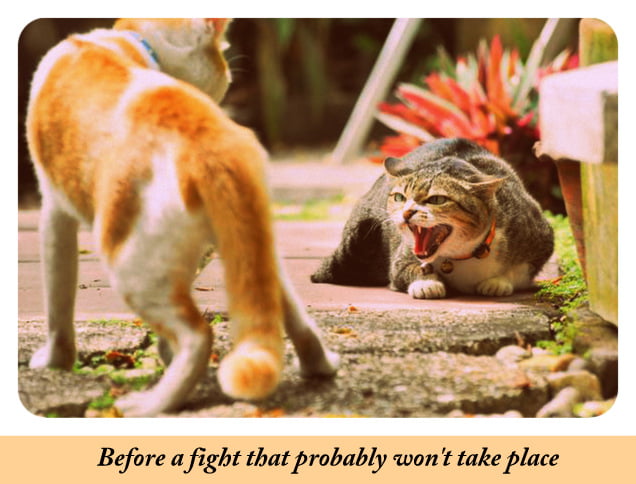Rarely, domestic cats fight to the death. A cat may die of their injuries. However, there are many caveats to that statement. In the urban environment, outdoor domestic cats, in general, get along well by avoiding each other even making friends. Domestic cats are, after all, quite sociable. Fights normally take place between male feral cats or community cats.

The key to answering the question, I believe, comes from Dr Desmond Morris, writing about this aspect of feline behaviour. He tells us that the “primary objective of an attacking cat is to deliver a fatal neck-bite to its rival, employing much the same technique as when killing prey”.
However, this lethal bite is hardly ever delivered because the fighting cats are normally fairly evenly matched. The primary neck-bite is almost impossible to achieve even with one cat being dominant over the other.
Cat fights are more likely to occur in the urban environment because there is less space for them, so under wild conditions cat-fights are a rarity.
I think we can come to the conclusion that most often when community cats fight they try and avoid direct conflict with their sumo-style stand-off, caterwauling and growling combined with their aggressive body language. At this phase, one cat might very slowly back off. They move slowly to avoid losing status. The intention is to give the impression that they’re not backing off.
If the encounter developes into a fight and the attacking cat has adopted the familiar postures, walking tall on stretch legs to look bigger than usual and with his ears flattened and placed back to protect them, he performs a strange but highly characteristic head-twisting action. The tomcat raises his head up slightly and tilts it to one side. This takes place at about 3 feet distance between the two. The attacking cat advances and then tilts his head the other way. This appears to be a signal that a neck-bite is about to be delivered. The attacker cat “acts out the intention movement of the assault typical of the species”.
Anyone who has seen two feral tomcats fighting will be impressed and perhaps horrified by the ferocity of it. There is no question that severe injuries can take place and because of that one of the cats may be killed. The super-aggressive fighting does not last long because it is too intense. They pull apart and resume their threat displays. The assault is repeated until one of them gives up by remaining lying on the ground with their ears fully flattened. The victor performs a characteristic display.
He turns at right angles to the vanquished cat and sniffs the ground. It is a ritual act. The victory display indicating to the vanquished cat that the victor accepts the owner’s capitulation and that the fight is over. The winning cat saunters off and a short while later the loser slinks away.
As mentioned, this sort of fighting to the death is unusual. Even among community cats because it is not conducive to survival. They learn to become sociable and where they have congregated at a source of food it pays to get along in order to preserve the source and ensure continuity of that stable and successful way of life.

